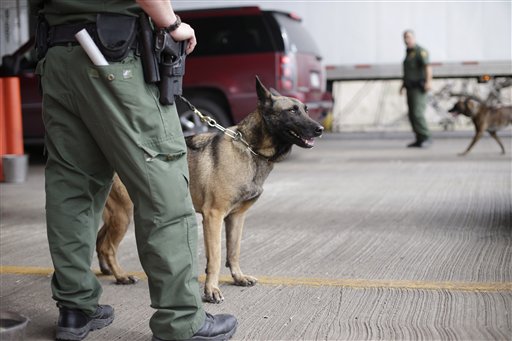(AP) Federal workers brace for furloughs
By SAM HANANEL
Associated Press
WASHINGTON
First there was a two-year pay freeze. Now furloughs loom, as federal agencies make personnel costs a prime target for across-the-board budget cuts that went into effect last week. The result: anxiety and low morale in a workforce often envied for its job security.
Government agencies vary widely in how they are dealing with the “sequester,” as the automatic cuts are called, according to labor unions that represent federal workers. Federal workers could face seven days of furloughs at the Housing and Urban Development Department, while Homeland Security personnel might see twice that number.
More than half of the nation’s 2.1 million federal workers could be furloughed over the next six months. The federal government is the country’s single largest employer, with its employees making up about 1.2 percent of the nation’s work force.
AFGE, which represents more than 600,000 federal workers, is trying to keep track of all the different furlough plans as their members face the prospect of lost wages during mandatory time off without pay and growing frustration about getting work done.
It seems the federal workforce is under constant attack these days, particularly from Republican lawmakers who want to shrink government and contend federal employees are overpaid with more generous benefits compared to the private sector. Even President Barack Obama supported the pay freeze, though he has issued an executive order that will give workers a 0.5 percent cost-of-living raise set for April. Still, Congress could take action that prevents the raise from happening.
The latest unemployment numbers offered even more bad news for government workers as federal employment, excluding the U.S. Postal Service, shrank by 4,200 jobs last month. That’s the fifth straight month of cuts, which may reflect a trend towards greater belt-tightening.
Schweizer conceded that working for the federal government remains a lot more stable than other industries, but he said the comfort level has changed.
Some agencies, including the Justice Department, already have sent out formal furlough notices to workers indicating furloughs of up to 14 days could begin as soon as April. All furloughs are subject to 30-day notices and to bargaining with unions representing government workers.
While the unions can’t stop the furloughs, they can try to ease the pain for employees by negotiating different times, allowing employees to swap days, or other changes. Unions are also trying to persuade agencies to make other cuts that don’t affect worker pay, such as cutting government contracts with private companies.
The Social Security Administration, for example, says it hopes to avoid furloughs altogether, instead saving money by terminating more than 1,500 temporary and other workers and losing more than 5,000 other positions through attrition.
But there are limits on flexibility. “If they are largely personnel-driven, there’s no way to avoid personnel-related cuts,” Lester said.
Meat and poultry inspectors at the Agriculture Department initially were told they might be furloughed for 11 consecutive days between June and July, possibly leading to a meat supply shortage and higher prices. But Agriculture Secretary Tom Vilsack backed away from that at a House hearing this week, telling lawmakers that the furloughs would not be consecutive after all.
At the EPA, officials are planning up to 13 furlough days, with the first four coming between April and June 1, said John O’Grady, president of AFGE local 704. There also would be mandatory furlough days on May 24, July 5 and Aug. 30 _ coming around the Memorial Day, July Fourth and Labor Day holidays _ that would shut the agency entirely, he said.
Some of the longest furloughs are expected at the Defense Department, where about 800,000 civilian employees face up to 22 unpaid days off over the next several months. The agency has not yet specified when those will happen, but some agencies may try to put off furloughs for several months in hopes that Congress will come up with a budget fix.
More flexibility could be coming soon. A House measure passed Wednesday that prevents a shutdown of federal agencies on March 27 also would grant the Pentagon greater latitude in implementing its share of short-term spending cuts. Senate Democrats could try to expand that flexibility to other agencies, potentially reducing the number of workers who are furloughed.
Sen. Roy Blunt, R-Mo., said he plans to introduce legislation that would allow the Obama administration to exempt from furloughs essential federal employees, such as those who perform food inspections and other urgent functions, so the consequences of the budget cuts would not harm the economy or public safety.
Border Patrol agents at the Homeland Security Department, for example, face up to 14 days of furloughs and a moratorium on regular overtime pay, which could mean a 35 percent decline in wages for the rest of the fiscal year. Union officials warn that could mean trouble for border security, as agents aren’t used to stopping work just because their shifts end, especially if they are chasing drug or gun smugglers.
___
Follow Sam Hananel on Twitter: http://twitter.com/SamHananelAP
___
Associated Press Writer Christopher S. Rugaber contributed to this report.

COMMENTS
Please let us know if you're having issues with commenting.